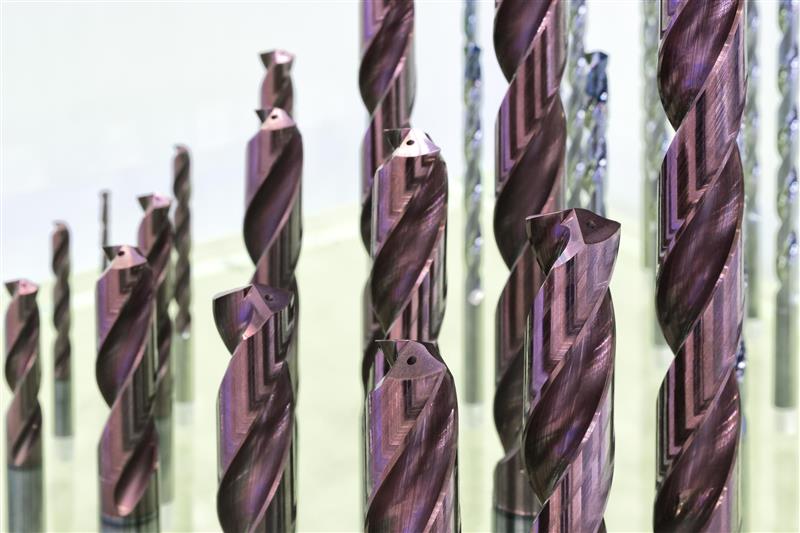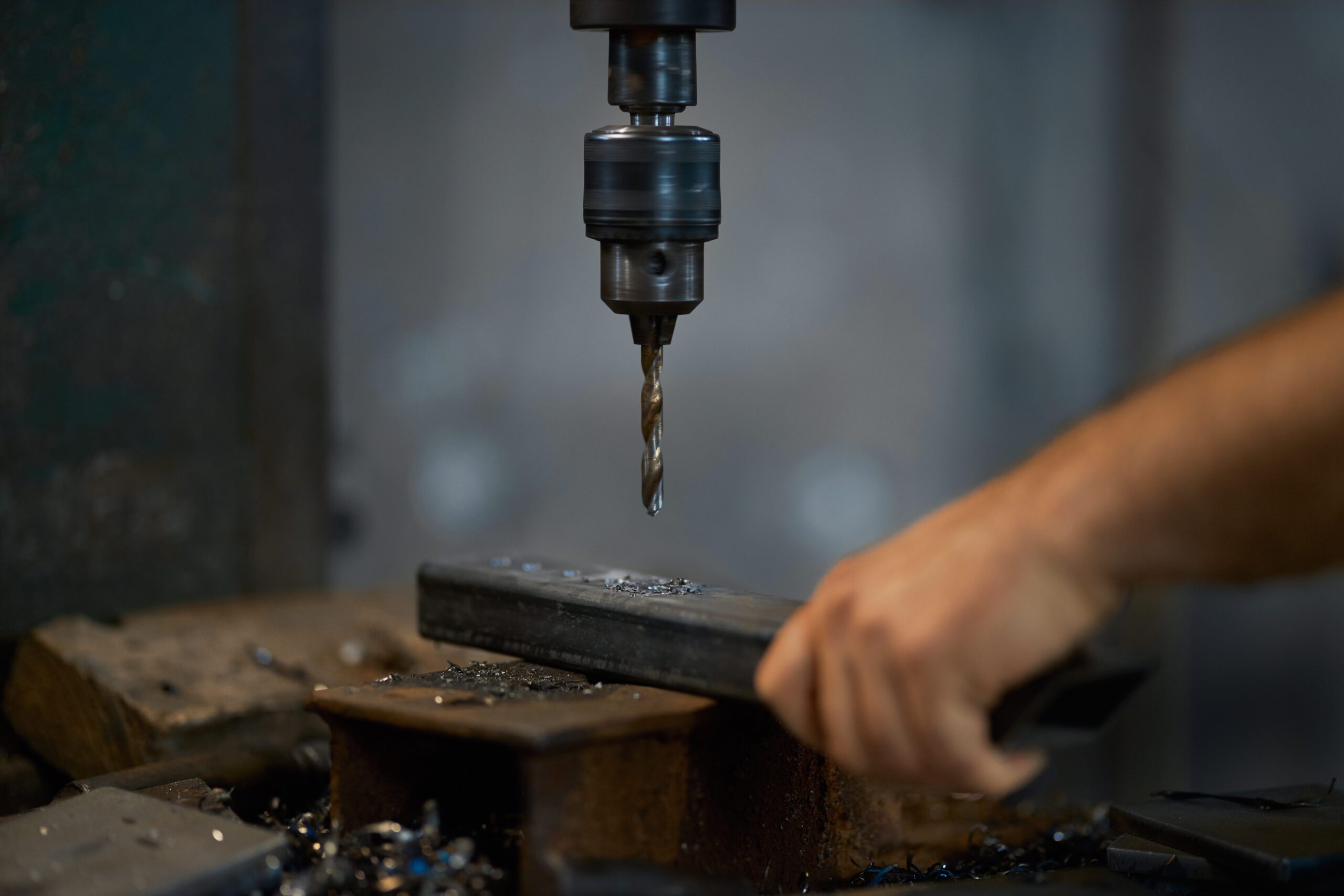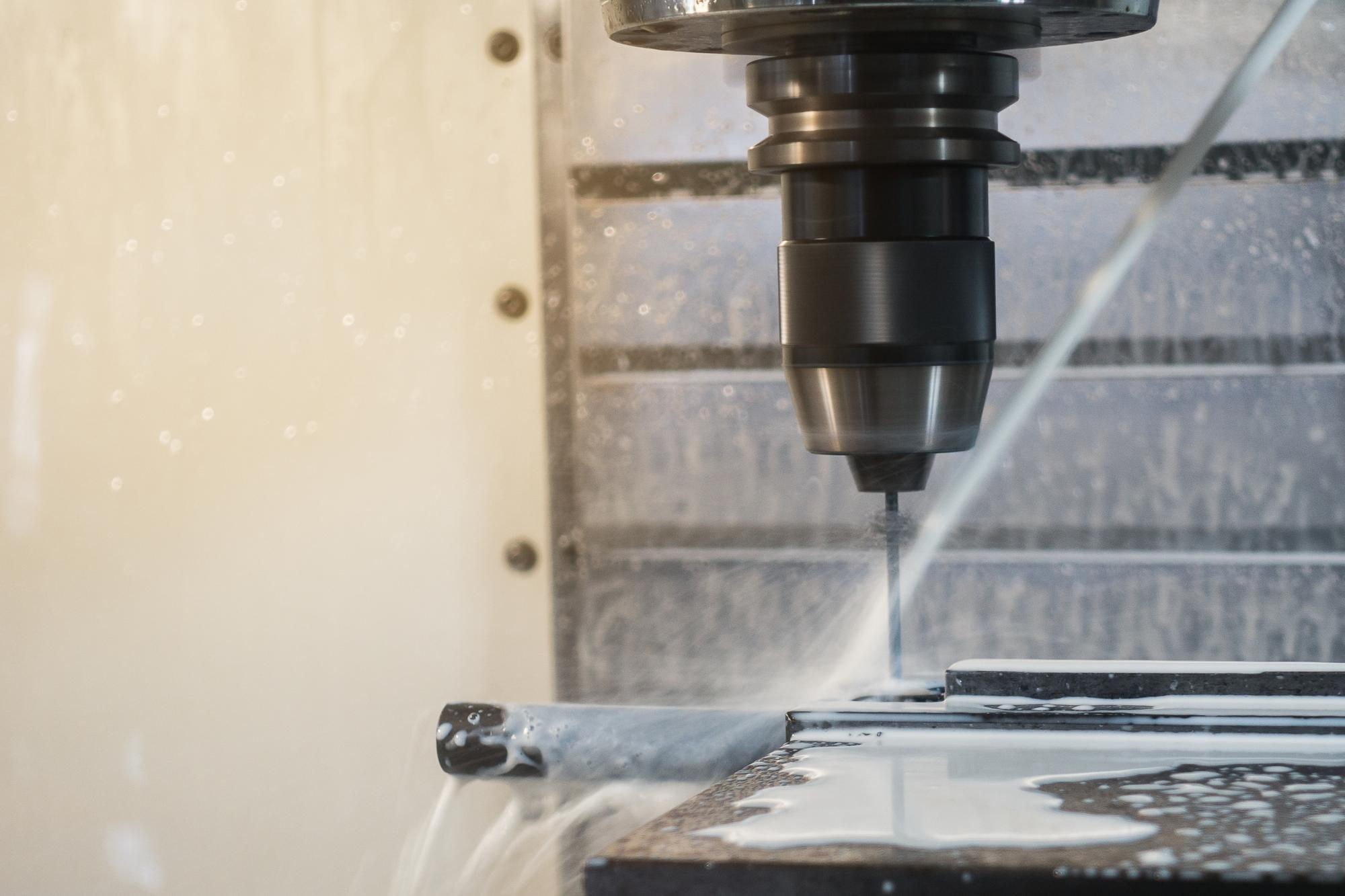
Machining Holes in Metal: Achieving Perfect Holes and Finishes
Machining holes in metal is one of the most fundamental yet demanding processes in modern manufacturing. Whether it’s aerospace, automotive, medical, toolmaking, or general fabrication, the quality of a hole, its size, roundness, finish, and location directly affects product performance. A sloppy hole means poor fit, reduced strength, and even outright failure.
This comprehensive guide explores the art and science of machining holes in metal, from basic drilling operations to advanced techniques that ensure exceptional dimensional accuracy and surface quality. We’ll examine the critical factors that influence hole quality, the various methods available for creating holes, and how to select the right tools and processes for your specific application.
Understanding the Fundamentals of Machined Holes
What Defines a Machined Hole?
A machined hole is created by cutting away material from a solid workpiece using specialized tools and processes. Unlike punched, stamped, or molded holes, machined holes offer superior precision, surface finish, and geometric accuracy.[2] The dimensional characteristics of a properly machined hole include:
- Diameter accuracy: The consistency of the hole diameter throughout its depth
- Roundness: How closely the hole cross-section matches a perfect circle
- Cylindricity: The three-dimensional roundness throughout the hole’s length
- Surface finish: The smoothness of the hole’s interior wall
- Perpendicularity: How square the hole is relative to the workpiece surface
- Position accuracy: The precise location of the hole relative to other features
Achieving excellent results in these parameters requires understanding the capabilities and limitations of different hole-making processes.
The Challenges of Perfect Holes
Creating perfect holes presents several challenges:
- Tool deflection: Cutting tools naturally deflect under cutting forces, potentially causing deviation from the intended hole path
- Heat generation: The cutting process generates heat that can cause thermal expansion and distortion
- Chip evacuation: Removing material chips from deep holes can be problematic [3]
- Material variations: Different metals respond differently to cutting forces
- Geometric accuracy: Maintaining straightness, roundness, and dimensional stability throughout the hole
- Tool wear: Progressive degradation of cutting edges affecting hole quality
These challenges multiply when working with harder materials, deeper holes, or when tighter tolerances are required. Overcoming them requires both technical knowledge and practical experience.
Kota KCT Solutions for Hole-Making in Metal
1. Drilling: The Foundation of Hole-Making
Drilling is typically the first step in creating a hole in solid metal, and the hole diameter is generally less than 80 mm. There are 2 ways to perform drilling: one is by rotating the cutting tool (drill bit), which has cutting edges at its point; the other is by rotating the workpiece.[1]
Drills, by design, have certain structural limitations. Their bending and torsional rigidity are relatively low, and poor centering often reduces accuracy.
On the positive side, drills offer a high material removal rate and excellent cutting efficiency, making them ideal for producing holes where tight tolerances are not critical. Common applications include bolt holes, threaded bottoms, and oil holes.
However, when holes require high-dimensional accuracy or a superior surface finish, drilling alone is not sufficient. In such cases, the hole should be refined through reaming, boring, or grinding as part of the finishing process.
Alongside distributing SOMTA drill bits, our own proprietary KCT drill bits also have specialized point geometries that improve centering, reduce thrust forces, and enhance chip evacuation, all critical factors for achieving superior hole quality from the initial drilling operation.
| Types of Drill Bits | Function/Uses |
| Taper Shank Drill
|
|
| Straight Shank Drill
|
|
| Reduced Shank Drill
|
|
Premium Quality Cutting Tools at Competitive Prices
Our cutting tools are expertly manufactured and rigorously tested to enhance machining performance and operational savings.

2. Reaming: Refining Hole Dimensions & Surface Finish
Reaming follows drilling when greater dimensional accuracy and improved surface finish are required. A reamer has multiple cutting edges arranged in a circular pattern, removing a small amount of material from a pre-drilled hole.[1]
With multiple cutting edges (typically 3–8 teeth), reamers provide better guidance, smoother operation, and more stable cutting. Unlike drills, reamers have no chisel edge, which improves centering and cutting conditions.
| Materials of Reamers | Function/Uses |
| HSS (High-Speed Steel)
|
|
| Carbide
|
|
Want the full details? Check out our in-depth guide on The Function of a Reamer to explore reamer types, selection tips, and practical usage.
3. Rotary Burrs: Controlled Material Removal for Hole Modification
Rotary burrs (also called rotary files or carbide burrs) provide a versatile method for enlarging, shaping, or finishing holes through controlled material removal. Unlike drills and reamers that follow fixed cutting paths, rotary burrs allow for manual or CNC-guided manipulation to create complex interior profiles or correct existing holes.
The primary advantage of rotary burrs is their flexibility; they can create non-circular openings, blend internal features, or enlarge holes without the need for specialized tooling. They excel at deburring operations, removing sharp edges, and smoothing internal corners in complex components.
The tungsten carbide rotary burrs from KCT feature precision-machined cutting edges that maintain sharpness through extended use. The optimized flute designs balance cutting efficiency with smooth operation, reducing vibration and improving surface finish.
| Shape of Rotary Burrs | Function/Uses |
| Cone Shape Rotary Burr
|
|
| Pointed End (Flame Shape) Rotary Burr
|
|
| Radius End (Tree Shape) Rotary Burr
|
|
| Oval Shape Rotary Burr
|
|
| Ball Shape Rotary Burr
|
|
| End Cut Rotary Burr
|
|
4. Counterboring & Countersinking: Creating Recessed Features
Counterboring and countersinking are secondary operations performed on pre-drilled holes to create specialized recessed features for hardware installation, clearance, or aesthetic purposes.

Counterbores are cutting tools designed to create cylindrical, flat-bottomed recesses concentric with existing holes. They typically feature:
- A pilot that aligns with the pre-drilled hole
- Multiple cutting edges on the circumference
- Flat cutting faces at the bottom
- A shank for mounting in a drill press or CNC machine
The primary purpose of counterboring is to allow fastener heads to sit flush with, or below, the workpiece surface. This operation is typically performed after drilling the initial hole and creates a precisely sized pocket for bolt or screw heads.

Countersinks create a conical recess at the entrance of a hole, producing an angled surface that accommodates the tapered underside of flathead screws. Key features include:
- Conical cutting surfaces with specific included angles
- Multiple cutting edges arranged radially
- Often include a pilot for alignment
- Available in various standard angles to match different fastener types
Countersinking creates a conical recess that matches the angled underside of flathead fasteners, allowing them to sit flush with the workpiece surface. Standard countersink angles include 82°, 90°, and 100°, with 82° being most common for flathead screws in engineering applications.
Critical Factors Affecting Hole Quality
The difference between a rough hole and a perfect hole often lies in cutting parameters.
1. Types of Metal
Different metals require different approaches to achieve optimal hole quality as they have vary hardness levels which will determine the type of drill bit you should use. Common metals include steel, aluminium, brass, and cast iron, each requiring specific drill bits for optimal results.[3]
- Aluminum: Tends to produce long, stringy chips; requires good chip evacuation
- Steel: Generates significant heat; requires proper cooling and lubrication
- Stainless steel: Work hardens easily; requires sharp tools and consistent feed rates[^4]
- Titanium: Poor thermal conductivity leads to heat buildup; requires lower speeds and robust cooling
- Hardened materials: May require specialized tooling or non-traditional processes
2. Cutting Parameters Optimization
Proper selection of cutting parameters dramatically influences hole quality.
Speed selection is critical. Too fast leads to excessive heat, accelerated tool wear, and poor surface finish, while too slow causes inefficient cutting, potential for work hardening, and increased cutting forces. The optimal speed depends on material, tool type, and coolant availability.[2]
Feed rate must also be carefully controlled. Too high results in poor surface finish, excessive tool deflection, and potential tool breakage, while too low causes rubbing instead of cutting, work hardening, and reduced tool life. The optimal feed rate creates proper chip formation and evacuation.
As hole depth increases relative to diameter, challenges multiply. Beyond a 5:1 depth-to-diameter ratio, manufacturers should consider specialized drilling techniques with enhanced chip evacuation. Beyond a 10:1 ratio, gun drilling or other deep-hole methods become necessary for successful results.[5]
3. Tool Selection & Condition
The quality of cutting tools directly impacts hole quality.[4]
- Tool material must match the workpiece material and operating conditions to ensure adequate wear resistance and cutting performance.
- Tool geometry particularly specialized point designs for different materials and applications, significantly influences hole quality.
- Tool condition is paramount—sharp tools produce better surface finish and dimensional accuracy than worn tools.
- Tool rigidity affects hole quality as stiffer tools maintain straightness and reduce deflection under cutting forces.
Our premium cutting tooling is manufactured to exacting standards with optimized geometries for specific materials and applications. Their advanced coatings extend tool life while maintaining cutting edge sharpness throughout the tool’s service life
Premium Quality Cutting Tools at Competitive Prices
Our cutting tools are expertly manufactured and rigorously tested to enhance machining performance and operational savings.


1. Marking & Centering
The journey to a perfect hole begins before any cutting takes place. Using layout lines and center punches ensures your drill starts exactly where intended, preventing wandering on hard or smooth surfaces. This simple step dramatically improves final accuracy and is often overlooked by less experienced machinists.
2. Pilot Drilling
Starting with a small drill (typically 25–40% of the final diameter) provides guidance for the larger drill. This reduces torque requirements and minimizes misalignment risks. Pilot holes are particularly important for larger diameter holes, where a full-size drill might wander or bind in the material.
3. Final Drilling
When using the target-size drill for roughing, careful selection of drill geometry based on the material is essential. Different point angles (118° vs 135°) and materials (HSS vs cobalt) perform differently depending on your workpiece. Always keep speeds and feeds matched to the diameter and material hardness to prevent premature tool wear or poor hole quality.
4. Reaming (Precision Step)
Reamers are the secret weapon for achieving truly precise holes. They enlarge and refine drilled holes to final size and tolerance with remarkable accuracy. Always drill slightly undersized (typically 0.2–0.5 mm smaller than the reamer) to leave appropriate stock for the reaming operation.
Using cutting fluid generously during reaming prevents chatter or scoring, resulting in smoother finishes. Choose between straight flute reamers (ideal for through holes and general use) and spiral flute reamers (better for blind holes, softer or gummy materials).
This is where KCT machine reamers excel—engineered with superior concentricity, razor-sharp cutting edges, and consistent finishes that outperform standard tooling. Their precision-ground geometry ensures repeatable results even in the most demanding applications.
5. Finishing
The final stage involves deburring to remove sharp edges with specialized deburring tools, countersinks, or abrasive methods. For applications requiring ultra-fine finish or exceptional roundness, honing or grinding may follow. Finally, inspection using plug gauges, bore gauges, or coordinate measuring machines (CMM) verifies that quality requirements have been met.[2]
Troubleshooting Common Problems

Even with the best preparation, hole-making problems occasionally arise. When confronted with oversized holes, the typical causes include drill wear, chatter, or poor reaming setup. The solution involves replacing worn tools and improving workholding rigidity to eliminate vibration that can cause dimensional issues.[7]
Rough surface finish commonly results from incorrect feed rates, dull reamers, or insufficient lubrication. Adjusting machining parameters and ensuring adequate cutting fluid application can dramatically improve surface quality. When experiencing chatter during reaming operations, reducing RPM and verifying that clamping is secure typically resolves the issue.
Broken drills, perhaps the most frustrating problem, typically result from excessive feed rates, work hardening of the material, or insufficient coolant penetration. Correcting speeds and feeds for the specific material and ensuring appropriate cutting fluid delivery prevent most drill breakage incidents. For difficult materials, implementing progressive drilling techniques that gradually increase hole size can significantly reduce breakage rates. [7]
By understanding these common challenges and implementing appropriate solutions, manufacturers can achieve consistent, high-quality holes across a wide range of materials and applications. The combination of proper tool selection, optimized parameters, and effective process control transforms hole-making from a potential problem area into a showcase of manufacturing excellence.
The Role of KCT Tools in Precision Hole-Making
Achieving perfect holes in metal requires more than just drilling—it demands the right tools, the right sequence, and strict quality control. With advances in tooling, machines, and measurement systems, today’s standards are higher than ever.
At Kota KCT, our premium drills and machine reamers are engineered to deliver precision, consistency, and efficiency in even the toughest applications. Call us today to discuss your hole-making needs and discover how KCT can support your production goals.
FAQ
What is the difference between drilling, boring, and reaming?
Drilling creates a new hole using a rotating multi-edge cutting tool (drill bit). Boring enlarges or improves an existing hole using a single-point cutting tool for enhanced accuracy. Reaming refines a pre-drilled hole to improve surface finish and dimensional accuracy using a multi-fluted cutting tool that removes a small amount of material.
What is the advantage of carbide tools over HSS for hole making?
Carbide tools offer several advantages: 3-10x longer tool life, ability to run at 2-3x higher cutting speeds, better performance in harder materials, superior wear resistance in abrasive materials, better thermal stability, and more consistent hole quality over time. However, they are more expensive and more brittle than HSS.
How do I prevent holes from being oversized?
Prevent oversized holes by using sharp tools, proper speeds and feeds, adequate coolant, rigid workholding, and high-quality tooling. For critical holes, consider using a smaller pilot drill followed by the final size drill, then reaming to final dimension.
References
[1] What are the methods of machining holes? [Internet]. 3Q Machining. 2022. Available from: https://www.3qmachining.com/what-are-the-methods-of-machining-holes/
[2] How to Drill A Hole in Metals and Plastics [Internet]. WayKen. 2023 [cited 2025 Oct 1]. Available from: https://waykenrm.com/blogs/how-to-drill-a-hole/
[3] Advanced Metal Drilling Techniques: Effective Strategies and Best Practices [Internet]. CCP Prema. [cited 2025 Oct 2]. Available from: https://cpp-prema.pl/en/advanced-metal-drilling-techniques-effective-strategies-and-best-practices/
[4] Hole Cutting for Metal Sheets: Techniques, Applications, and Best Practices [Internet]. Lyah-machining.com. 2025 [cited 2025 Oct 2]. Available from: https://www.lyah-machining.com/hole-cutting-for-metal-sheets/
[5] BACH INDUSTRY AG [Internet]. Bach-industry.com. 2025 [cited 2025 Oct 2]. Available from: https://bach-industry.com/deep-hole-drilling/
[6] 12 Tips for Drilling Perfect Holes in Metal | DP Diamond [Internet]. Dpdiamonddrilling.co.uk. 2023 [cited 2025 Oct 2]. Available from: https://www.dpdiamonddrilling.co.uk/drilling-down/drilling-perfect-holes-12-tips-for-drilling-holes-in-metal
[7] What are the most common piercing problems ? [Internet]. Tivoly France. TIVOLY; 2024. Available from: https://www.tivoly.com/en/drilling-problem-solutions
Acquire Premium Quality Cutting Tools at Exceptional Prices with Kota Cutting Tools
Our cutting tools are expertly manufactured and rigorously tested by our technical team to enhance your machining performance and take your business to new heights.










